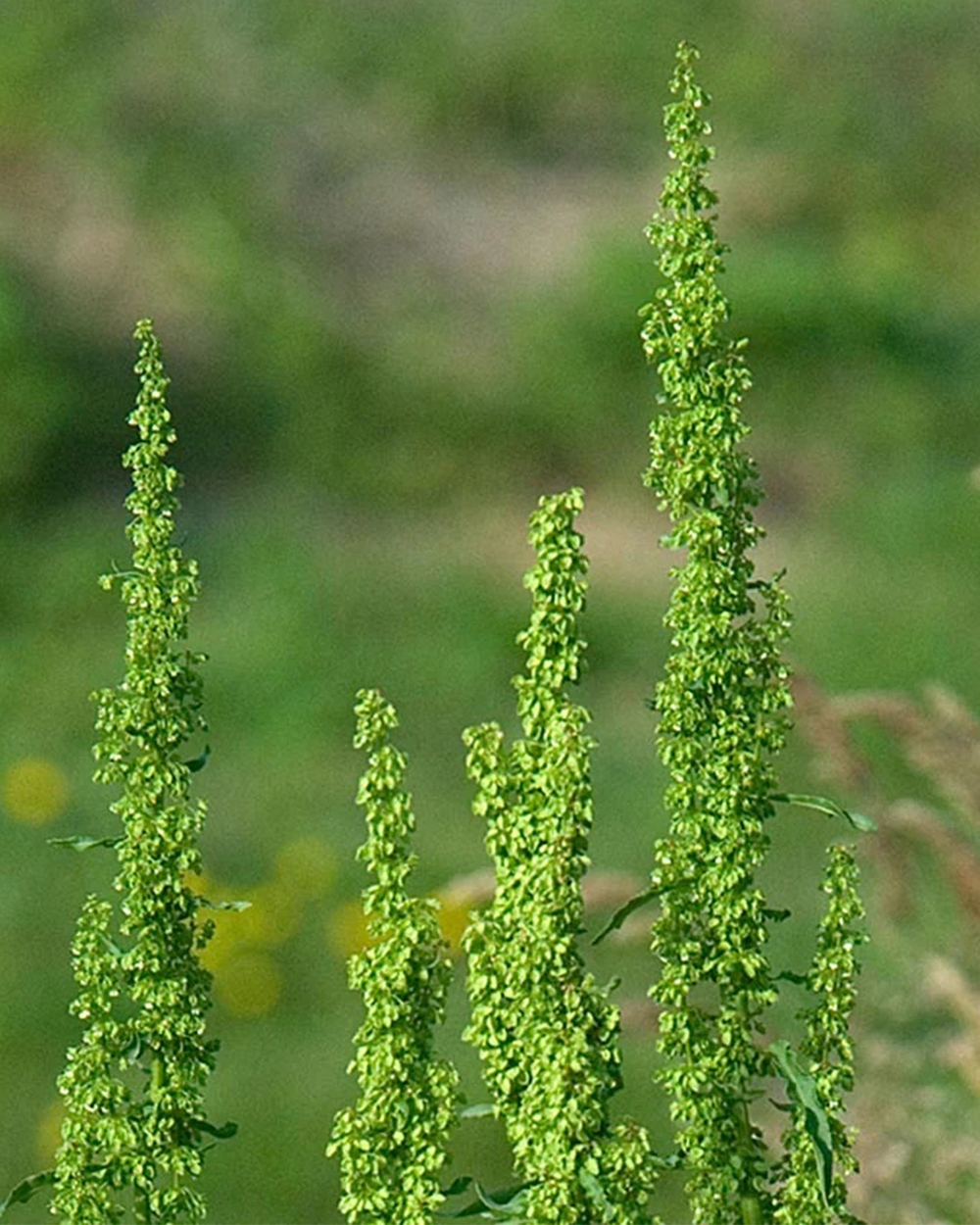Yellow dock, scientifically known as Rumex crispus, is a perennial herbaceous plant that belongs to the Polygonaceae family. It is native to Europe and western Asia but has become naturalized in many parts of North America. Yellow dock is known for its distinctive yellow taproot, which is often used for medicinal and culinary purposes.
Here are some key characteristics and uses of yellow dock:
- Appearance: Yellow dock typically grows to a height of 1 to 3 feet (30 to 90 cm). It has lance-shaped leaves with a slightly wavy margin. The leaves are usually green but can turn reddish or brownish as they mature. The plant produces tall, slender flower spikes with greenish-yellow to reddish-brown flowers that bloom from late spring to early summer.
- Edible Uses: Yellow dock leaves can be harvested and consumed when young. They have a somewhat sour taste due to the presence of oxalic acid, but they can be used in salads or cooked like spinach. The roots can also be consumed after cooking to reduce their bitterness.
- Medicinal Uses: Yellow dock has a long history of use in traditional herbal medicine. The roots of the plant are particularly valued for their medicinal properties. They are believed to have a laxative effect and are used as a mild natural laxative and detoxifying agent. Yellow dock is also considered a blood purifier and has been used to treat conditions such as skin disorders, constipation, and digestive issues.
- Nutritional Value: Yellow dock is a good source of vitamins A and C, as well as various minerals, including calcium, magnesium, and iron.
- Precautions: While yellow dock has potential health benefits, its use should be approached with caution. Some people may be sensitive to the oxalic acid in the leaves, which can be harmful if consumed in large quantities. Additionally, it’s important to consult with a healthcare professional before using any herbal remedy, especially if you are pregnant, nursing, or taking medications.
- Other Uses: Yellow dock has been used for dyeing fabrics. The roots can produce a yellow to orange dye when processed.
Overall, yellow dock is a versatile plant with both culinary and medicinal uses, but it should be used judiciously and with an understanding of its potential benefits and risks. It’s advisable to consult with an herbalist or healthcare provider before using Yellow Dock for medicinal purposes.


Reviews
There are no reviews yet.